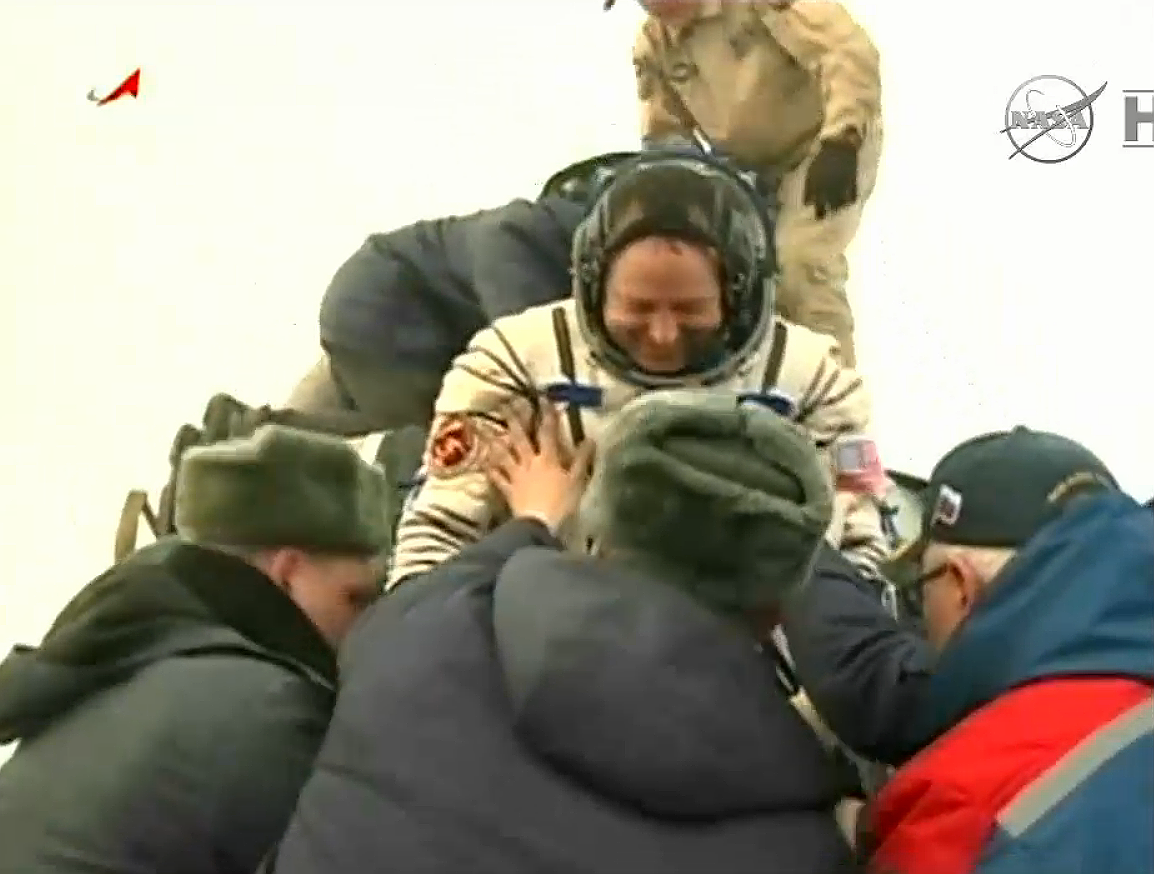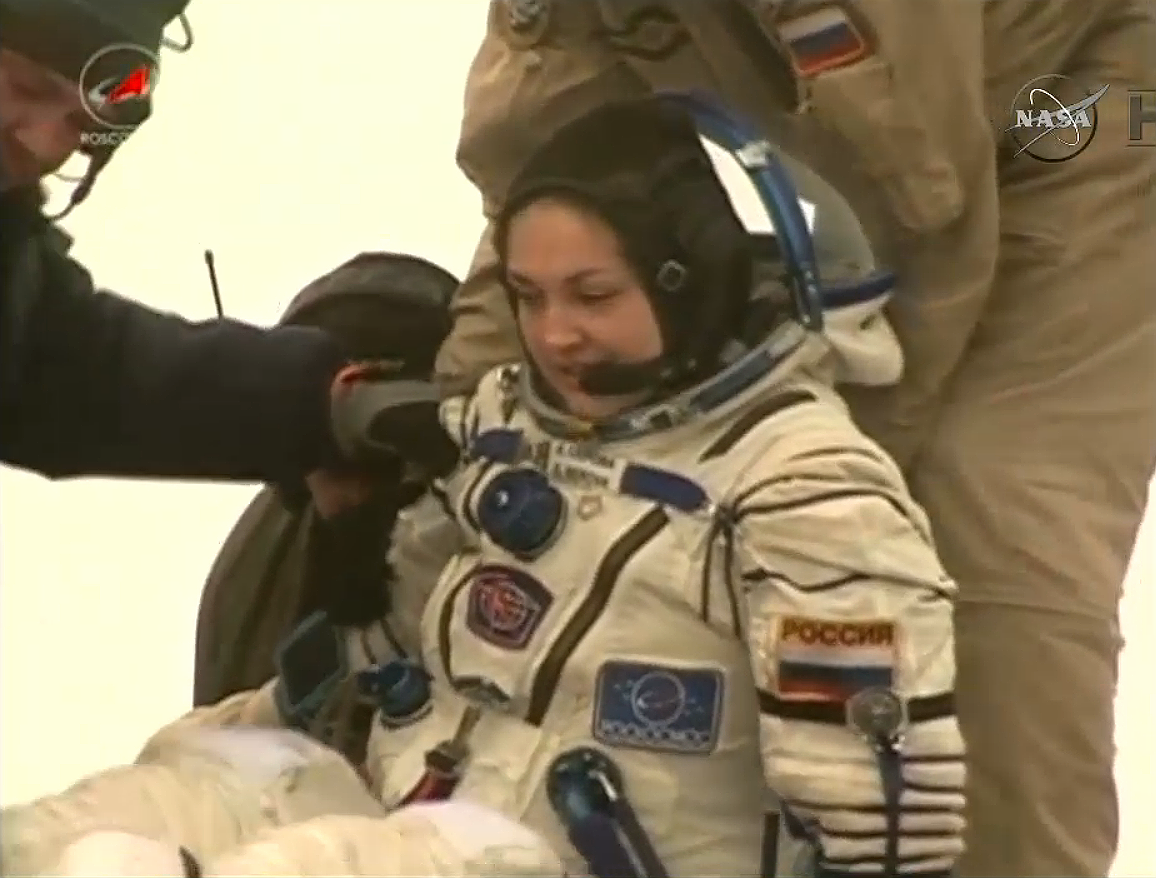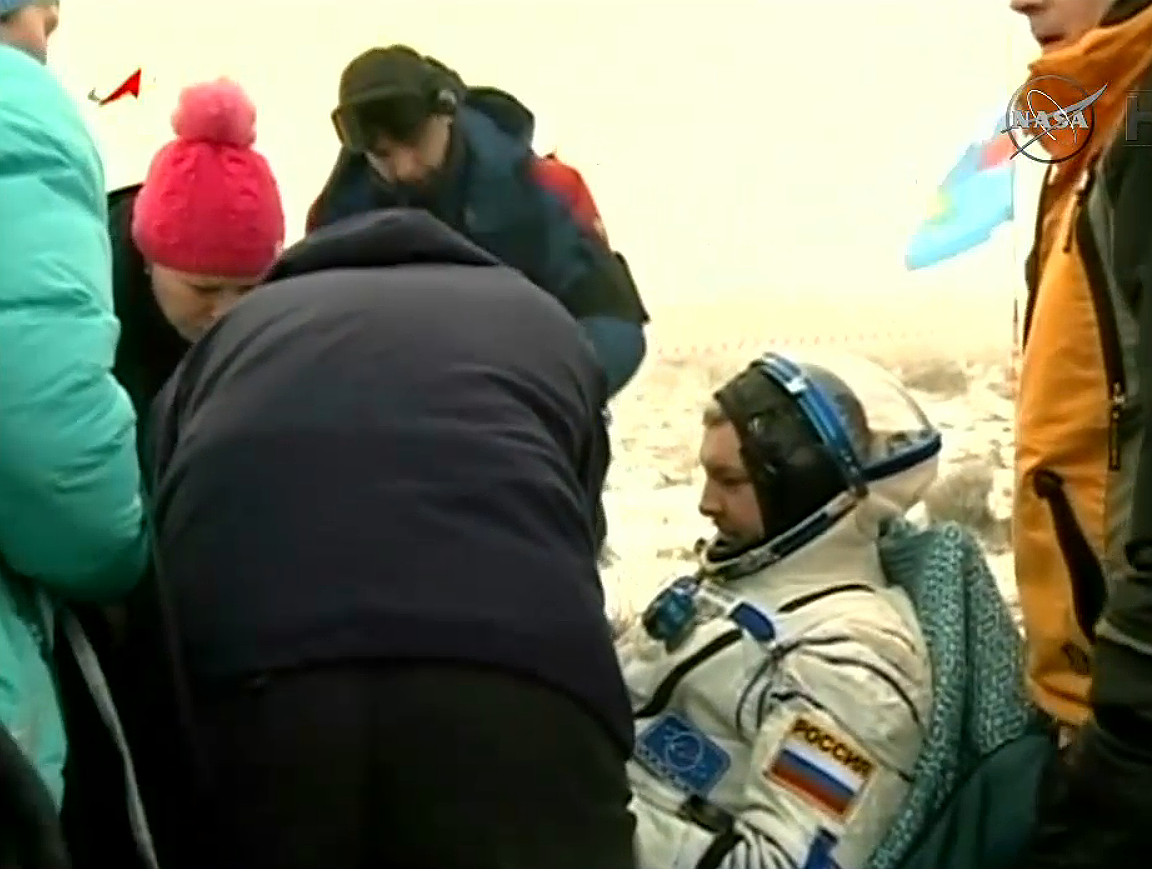
Three crew members returned to Earth Wednesday after a 167-day mission on the International Space Station (ISS) that included hundreds of scientific experiments and several spacewalks to prepare the orbiting laboratory for future arrivals by U.S. commercial crew spacecraft.
Expedition 42 commander Barry Wilmore of NASA and flight engineers Alexander Samokutyaev and Elena Serova of the Russian Federal Space Agency (Roscosmos) touched down at approximately 10:07 p.m. EDT (8:07 a.m. March 12, Kazakh time) southeast of the remote town of Dzhezkazgan in Kazakhstan.

During their time on station, the crew members participated in a variety of research focusing on the effects of microgravity on cells, Earth observation, physical science and biological and molecular science. One of several key research focus areas during Expedition 42 was human health management for long-duration space travel, as NASA and Roscosmos prepare for two crew members to spend one year aboard the space station.

The space station also serves as a test bed to demonstrate new technology. The Cloud-Aerosol Transport System (CATS) arrived and was installed during Expedition 42, and already is providing data to improve scientists’ understanding of the structure and evolution of Earth’s atmosphere. This may lead to enhancements to spacecraft launches, landings and communications systems; help guide future atmospheric investigations of Mars, Jupiter or other worlds; and help researchers model and predict climate changes on Earth.

The newly installed Electromagnetic Levitator will allow scientists to observe fundamental physical processes as liquid metals cool, potentially leading to lighter, higher-performing alloy, mixtures of two or more metals or a metal and another material, for use on Earth and in space.
The station crew also welcomed three cargo spacecraft with several tons of scientific investigations, food, fuel and other supplies. In January, the trio helped grapple and connect a SpaceX Dragon spacecraft on the company’s fifth contracted commercial resupply mission to the station. The Dragon returned to Earth in February with critical science samples. Two Russian ISS Progress cargo craft docked to the station in October and February. The fifth and final European Automated Transfer Vehicle, bearing the name of Belgian physicist Georges Lemaître, considered the father of the big-bang theory, departed the station in February.
During his time on the orbital complex, Wilmore ventured outside the space station with NASA astronaut Terry Virts on three spacewalks to prepare for new international docking adapters and future U.S. commercial crew spacecraft. Wilmore also completed a spacewalk in October with fellow NASA astronaut Reid Wiseman to replace a failed voltage regulator. Samokutyaev conducted one spacewalk during his time in space.
Having completed his second space station mission, Samokutyaev now has spent 331 days in space. Wilmore, having previously flown as a shuttle pilot on STS-129, has spent 178 days in space. Serova spent 167 days in space on her first flight.
Expedition 43 currently is operating the station, with Virts in command. Flight engineers Anton Shkaplerov of Roscosmos and Samantha Cristoforetti of ESA (European Space Agency), are continuing station research and operations until three new crewmates arrive in two weeks. NASA’s Scott Kelly and Roscosmos’ Mikhail Kornienko and Gennady Padalka are scheduled to launch from Kazakhstan March 27, Eastern time. Kelly and Kornienko will embark on the first joint U.S.-Russian one-year mission, an important stepping stone on NASA’s journey to Mars.
For more information about the International Space Station and its crews, visit:
https://www.nasa.gov/station
For b-roll and other media resources, visit:
https://www.nasa.gov/stationnews
Follow the station on Twitter at @Space_Station
-end-
Stephanie Schierholz
Headquarters, Washington
202-358-1100
stephanie.schierholz@nasa.gov
Dan Huot
Johnson Space Center, Houston
281-483-5111
daniel.g.huot@nasa.gov

























